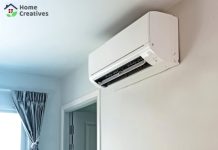You might think closing your doors and windows keeps you safe from pollution, but that isn’t always true. In some cases, indoor air can be more polluted than outdoor air. That means you could be breathing in harmful particles and gases without even knowing it.
Many people notice headaches, fatigue, itchy eyes, or allergy-like symptoms at home but don’t connect them to air quality. Since most of us spend the majority of our time indoors, this exposure adds up. Unlike visible dust or dirt, many of these pollutants are microscopic and invisible. Understanding what’s in the air you breathe every day is the first step toward protecting your health.
Why Indoor Air Quality Deserves Your Attention
The air inside your home affects your well-being in ways you might not expect. Breathing polluted air for long periods can trigger coughing, sinus irritation, or asthma attacks. Children, older adults, and people with existing health conditions are often the most sensitive, but even healthy adults can feel the effects. Poor indoor air has also been linked to problems like poor sleep, low concentration, and frequent headaches.
The concern goes beyond short-term discomfort. Studies show that long-term exposure to indoor pollutants can increase risks of more serious respiratory issues. While outdoor smog and traffic fumes get more attention, it’s often the hidden contaminants inside that cause ongoing problems. That’s why many experts stress the importance of whole-home air purification systems as a way to protect health and maintain cleaner air throughout every room.
Allergens That Hide in Everyday Spaces
One of the most common air quality problems comes from allergens. Dust mites are microscopic organisms that thrive in soft furnishings, bedding, and carpets. Their waste particles float through the air and can trigger sneezing, itchy eyes, or asthma flare-ups.
Pollen is another major contributor. It enters homes on clothing, shoes, or pets and can linger in the air or settle on furniture. Even if you don’t spend much time outside, pollen can still affect you indoors. Pet dander is another irritant. It comes from flakes of skin and saliva, not just fur, and can cause strong reactions for sensitive individuals.
Mold spores also pose a serious risk. They grow in damp areas like basements, bathrooms, and poorly ventilated kitchens. When released into the air, they can cause irritation or respiratory infections. Because allergens spread so easily, they circulate throughout your living space, making them difficult to avoid.
VOCs: The Unseen Chemicals in Your Home
Volatile organic compounds, or VOCs, are gases released from a wide range of everyday items. Unlike allergens, you can’t see them, and often you can’t smell them either. VOCs come from products like paints, household cleaners, glues, furniture, and even air fresheners.
Short-term exposure can cause watery eyes, dizziness, or throat irritation. Long-term exposure raises more serious concerns, as some VOCs have been linked to chronic respiratory issues and other health conditions. The problem is that VOCs don’t just disappear quickly. They continue to release from products for weeks or even months, which means levels can build up inside, especially in homes with poor ventilation.
Everyday Habits That Make Air Quality Worse
Sometimes it isn’t just products that pollute your indoor air—it’s the way you live. Cooking produces smoke, grease particles, and gases that spread quickly if ventilation is weak. Burning candles or incense may smell pleasant, but they release fine particles that irritate the lungs.
Indoor smoking is one of the most damaging habits, but even occasional smoking can leave behind chemicals that cling to walls, fabrics, and furniture. Using aerosol sprays adds more pollutants, including both particles and gases, to the air. Even cleaning routines can make things worse if you rely on harsh sprays or chemical-heavy products.
Because modern homes are often sealed tightly to save energy, these pollutants don’t escape easily. Instead, they build up and circulate, creating a cycle of exposure that’s easy to overlook.
How Humidity Levels Shape the Air You Breathe
Moisture in the air plays a big role in indoor air quality. When humidity is too high, it creates the perfect environment for mold growth. Mold spores then spread into the air, triggering allergies and other respiratory problems. Dust mites also thrive in humid environments, which makes the issue worse.
When humidity is too low, the problems look different. Dry air irritates your throat, skin, and eyes. It also keeps dust particles and allergens floating longer, which makes them easier to breathe in. Maintaining a balanced humidity level—ideally between 30% and 50%—can reduce both extremes. Tools like dehumidifiers or humidifiers can help, but simple steps like venting bathrooms and kitchens also make a difference.
Wildfire Smoke and Outdoor Pollutants Seeping Indoors
Outdoor pollution doesn’t always stay outside. When wildfires spread smoke across regions, homes are not immune. Small particles, often referred to as PM2.5, are so tiny that they easily pass through cracks, vents, and even open windows. These particles are dangerous because they can reach deep into the lungs and even enter the bloodstream.
Wildfire smoke is not the only concern. Vehicle emissions, pesticides, and industrial pollutants can all find their way indoors. For people living in cities or near busy roads, exposure can be a daily problem. The fact that most of these pollutants are invisible makes them even harder to track. Once indoors, they mix with existing allergens and VOCs, making the air even more harmful. The best defense is knowing when outdoor air is hazardous and taking steps to keep it from infiltrating your home.
Simple Steps to Improve Your Air Today
Improving indoor air quality doesn’t always require large investments. There are steps you can take immediately to make your environment healthier. One of the easiest changes is opening windows when outdoor air quality is good, which helps bring in fresh air and reduce buildup inside. Regularly changing HVAC filters is another simple but often overlooked step. Clean filters trap more dust and particles before they circulate through your home.
Switching to low-VOC paints, cleaners, and furniture also makes a noticeable difference over time. For allergy control, vacuuming with a HEPA filter and washing bedding in hot water reduces dust mites and dander. Even simple habits, like leaving shoes at the door or grooming pets outdoors, can limit the spread of allergens inside. These small actions add up and support cleaner air without requiring major upgrades.
Indoor air quality is shaped by many hidden factors. Allergens, VOCs, daily habits, and even outdoor pollution all contribute to the mix of what you breathe at home. While small changes can make a difference, long-term solutions often require a more complete approach. Portable purifiers and DIY steps help, but they have limits. Whole-home systems, combined with better habits and awareness, offer the strongest defense against unseen pollutants.
Taking control of your air is about more than comfort. It’s about protecting your health and creating a safer living space for everyone in your household. Cleaner air is possible, and the sooner you act, the sooner you’ll feel the difference.


























